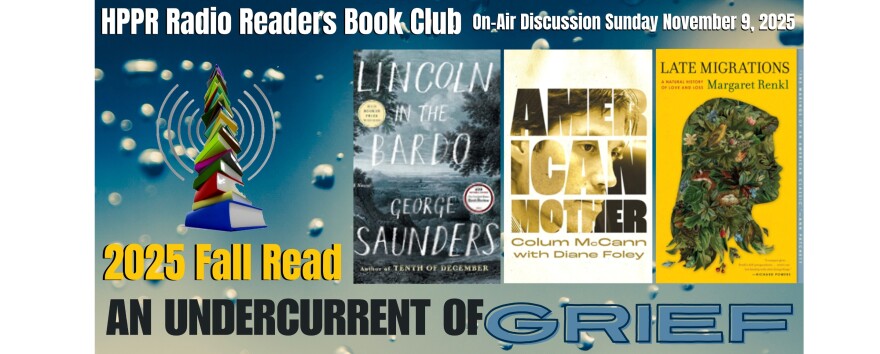This is Mike Strong, in Hays, for HPPR. The book is “How the Post Office Created America” by Winifred Gallagher.
In the year 1831, French traveler Alexis de Tocqueville was following the US mail as it was transported by stagecoach to the most remote areas of the barely 50-year-old United States. Tocqueville was looking for evidence of the origins of civilization, believing that he could trace it backward in time from centers of population to remote areas, finding ever more savage and ignorant people as he went.
Tocqueville’s working hypothesis, his basic assumption, was that “wealth, size and physical endowment” would have a direct relationship to “cultural attainment,” as historian Richard John wrote in “Spreading the News: The American Postal System.”
Instead, Tocqueville had to reassess. He decided that “communication could create culture.”
Tocqueville watched his stagecoach’s driver throw a bundle of mail at the doorstep of a rustic cabin in the woods, a post office. The movement of information, he realized, brought the movement of ideas.
Tocqueville’s chosen measure of data to track intellectual movement was postal revenue. When he compared the Département du Nord, the most populous department (county) along the northern border of France, bordering Belgium, Tocqueville realized that upper Michigan received far more non-local information than the average citizen of Nord. Nord, in 1831, had 990,000 residents. Today it is the 4th largest urban area in France after Paris, Lyon and Marseille. Upper Michigan was a barely populated farming area, a remote outpost of European civilization.
Reversing his working assumptions, Tocqueville wrote, “There is no French province in which the inhabitants knew each other as well as did the thirteen million men spread over the extent of the United States.”
Only 39 years before Tocqueville made his 1831 journey, the Postal Act of 1792 was passed. That postal act (there were others later, adding provisions) – that postal act provided a means to create the postal office as a self-financing service, not a profit-making business, which had a special provision for carrying newspapers between printers. Newspapers had not fared well in the American Revolution and this act was the incentive for a boom in new printers and newspapers.
The Post Office Act of 1792 had four factors which were central to the role it would play in the nation.
- All postal routes were created and set by congress.
- There was no minimum required revenue to setup and run a post office.
- The privacy of the mail was protected - no government surveillance (Note: 23 May 2005 headline FBI wants to surveille the mail)
- Newspaper exchange between printers was free.
Not even the army, which in 1831 had only 6,332 troops, most in isolated posts.
employees and by 1841 the figure was 79-percent. That is more than a dozen papers a day on average (assuming 365 delivery days) at each newspaper across the new nation.
By the 1830's newspapers were receiving something like 4,500 exchange papers a year. It was the first time in history so much information was so readily available and so inexpensive.
Printers shared information from the largest cities to the most remote frontier outposts. They re-published each others' information - very much the way bloggers currently re-publish information today. There were neither wires nor wire services at first, just correspondence.
When the constitution was created there was almost no sense of a nation. The states were what the average citizen related to. The Post Office became almost the only visible connection with the federal government.
By 1831 postal employees made up 74-percent of all federal. There was no federal income tax and very few other federal agencies which intruded on average lives. The post office was the federal government to most people.
Year | Percent | Postmasters | All Non-Military Feds |
1816 | 69.1 | 3,341 | 4,837 |
1821 | 68.9 | 4,766 | 6,914 |
1831 | 76.3% | 8,764 | 11,491 |
1841 | 79.2% | 14,290 | 18,038 |
In England and Europe new post offices had to have a return in revenue. France required $200 a year. In terms of the number of post offices for every 100,000 persons, there were 74 post offices in the US, only 17 in Great Britain and a mere 4 in France.
In the US, congress members appointed postmasters everywhere. Often the appointees were part timers, but they were a gathering point for information.
Little by little a sense of a national identity emerged changing from these United States to, after the civil war, the United States.
This is Mike Strong, in Hays, for HPPR Radio Readers Book Club
Reference: 23 May 2005 – Democracy Now Headline: FBI Seeks Greater Power to Track Mail. The New York Times is reporting that the Bush administration wants to enlist the postal service in its fight in the so-called war on terror. The Senate Intelligence Committee is expected to consider giving the FBI greater power to track mail sent through the postal service. Under one proposal, postal officials would be required to hand over information on the outgoing and incoming mail of anyone connected to foreign intelligence investigations. The FBI would still need a search warrant to actually open the mail.









